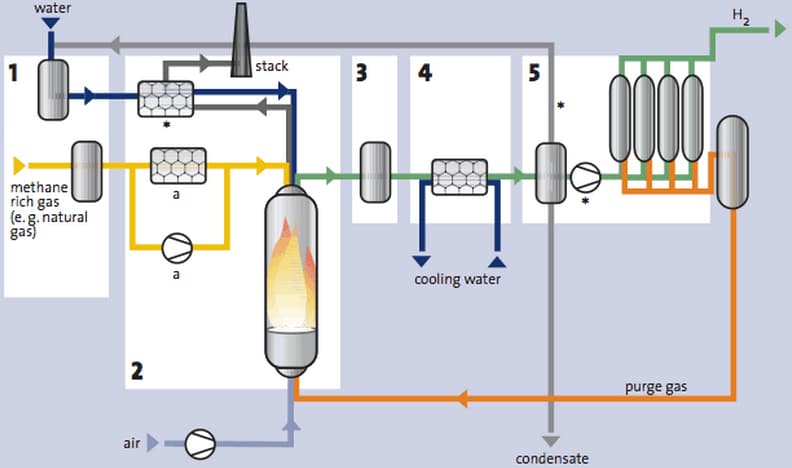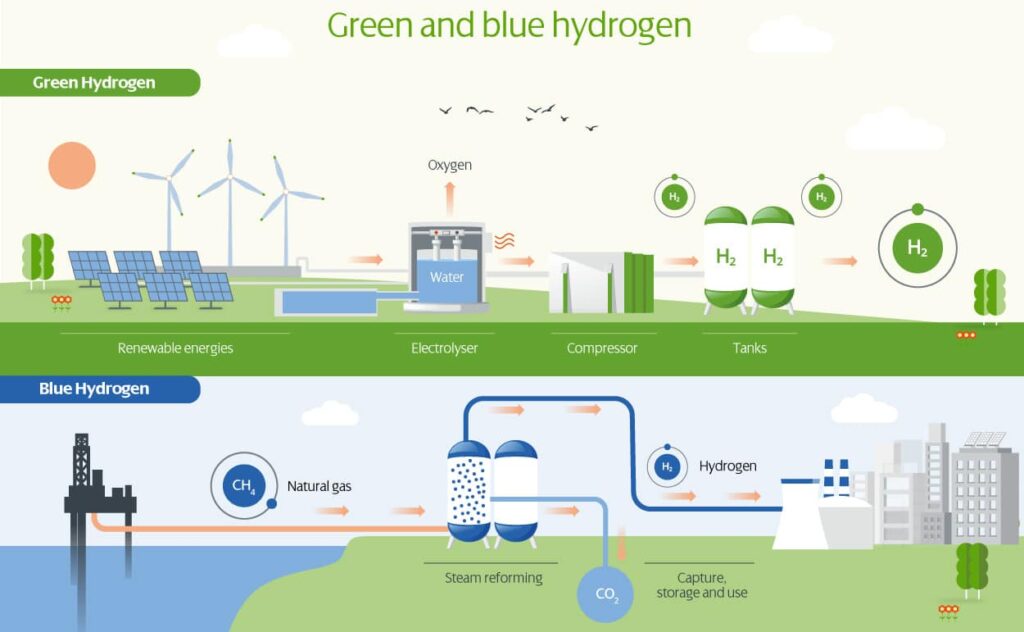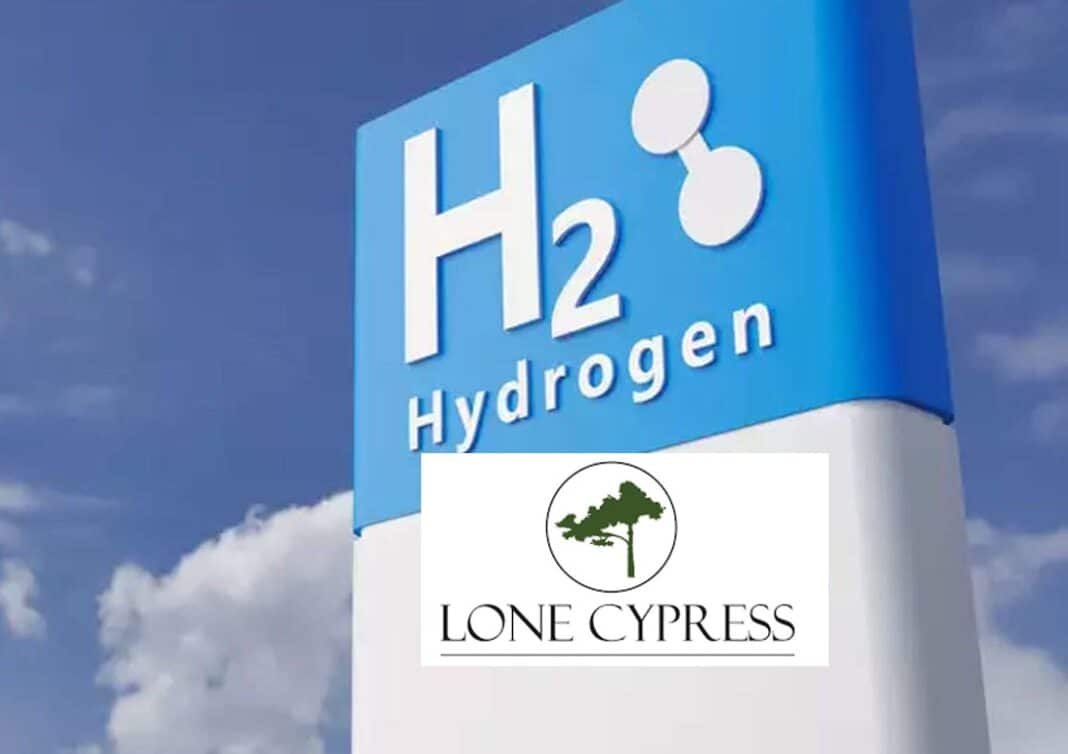In the heart of California’s Elk Hills Field, a hydrogen revolution is unfolding. The Lone Cypress Hydrogen Project is ramping up with a daily production capacity of 65 metric tonnes, positioning the company as the Western US’s blue hydrogen leader.
The project isn’t just impressive; it’s a game-changing venture of Lone Cypress Energy Services. The initiative aims to convert methane emissions into blue hydrogen, an innovative approach that can potentially transform the energy sector.
The project’s Front-End Engineering Design (FEED) study was successfully completed. It was a collaboration between Lone Cypress and its strategic partner Carbon TerraVault JV Holdco, LLC (CTV). CTV is a joint venture of California Resources Corporation (CRC) and Brookfield Renewable.
The project will utilize carbon sequestration assets developed by CTV.
Championing a Greener Energy Sector
Lone Cypress Energy Services is an energy company specializing in hydrogen generation, waste-to-energy solutions, and traditional oil and gas midstream facilities, boasting 100 years old combined experience.
California Resources Corporation is an energy and carbon management company spinning out from Occidental Petroleum in 2014. CRC currently holds the biggest mineral reserves in California, producing some of the US’s lowest carbon-intensity oil.
Brookfield Renewable is a global leader in renewable power, operating a vast portfolio of hydroelectric, wind, solar, and storage facilities worldwide. They’re under Brookfield Asset Management, a global company with assets under management worth about $850 billion.
Greg Brooks, Lone Cypress’ President and CEO, emphasized the importance of the study, stating it validated both the technical and commercial viability of the project. He also expressed confidence in the project saying:
“…this facility will generate the most cost-competitive low-carbon liquid hydrogen in the Western United States.”
The Lone Cypress project is not just about energy but is also an economic dynamo. It will inject over $500 million into California’s local economy and bring benefits to the community.
With 1,200+ future jobs during its construction phase, the project will significantly uplift employment in the state. The best part is that it will help in the global efforts in slashing carbon emissions.
The Lone Cypress Hydrogen Project’s integrated carbon capture system is a marvel. It will store 500,000 metric tonnes of CO2 annually, which is like erasing 100,000 cars from the roads.
What’s Next for Lone Cypress Hydrogen Project?
Strategic location matters and Lone Cypress knows it. Sprawling over 300 acres at CRC’s Net Zero Industrial Park at Elk Hills Field, the project has the potential to be California’s hydrogen hub. The company ensures this through its FEDD study design to maximize impact and reach.
Money flows to innovative efforts. Drawing a staggering $1.5 billion in investments, Lone Cypress has caught the eye of major energy stakeholders. Sustainability-focused funds are flowing through the project’s promise of a sustainable, profitable future.
CorEnergy Infrastructure Trust, for instance, also supported the development of the project with about $1 million.
The initiative also shows how collaboration among industry leaders is critical in advancing this kind of project. With over 10 industry players working together, including CRC and Brookfield Renewables, the project is a joint force of giants.
Market analysts are buzzing with predictions for Lone Cypress. They estimate that by 2026, the project will cater to up to 5% of California’s hydrogen demand.
Following the FEED study, Lone Cypress has submitted the necessary permits and is in the process of finalizing agreements for hydrogen off-take from the facility. A final investment decision is due by this year-end, with the project beginning operations in the 4th quarter of 2025.
Harnessing state-of-the-art steam methane reformation technology for blue hydrogen production, Lone Cypress is pushing boundaries and setting new industry standards.
The Race for Hydrogen Plants and Vehicles
Blue hydrogen refers to hydrogen gas that’s produced through steam methane reforming (SMR), a type of natural gas reforming process. The key characteristic of blue hydrogen is that producing it uses fossil fuels, primarily methane, as the input.
The Steam Methane Reforming Process

The Lone Cypress project is the first carbon sequestration project under CRC’s “carbon terra vault” initiative, aiming to capture and store 200 million metric tons of CO2 at an estimated cost of $2.5 billion. This initiative is in partnership with Brookfield Renewable.
Despite its modest size, this project using a hydrogen plant is notable for its approach and meaningful for California Resources’ rollout of carbon capture and sequestration technology. According to them, it will be the first of many projects to come.
But CRC is not the only major player in the field. Two other oil giants are considering blue hydrogen facilities to generate hydrogen. Texas-based ExxonMobil Corp also unveiled last March its plan to build a blue hydrogen plant at its facility in Baytown.
It’s worth noting that blue hydrogen is part of a broader conversation around transitioning to cleaner energy sources and reducing carbon emissions. Many people are not aware that the global hydrogen market is worth $120 billion.
The idea behind blue hydrogen is to mitigate the emissions of producing hydrogen, making it more eco-friendly compared to conventional hydrogen production, though it still relies on fossil fuels, unlike green hydrogen. Green hydrogen is produced using renewable power so it’s emission-free.
Some experts consider blue hydrogen as a transitional solution that can help industries shift away from high-carbon energy sources while infrastructure for green hydrogen is being developed and scaled up. Here’s how green hydrogen differs from blue hydrogen.

In other Hydrogen news, First Hydrogen (TSXV: FHYD), is one of those companies championing the use of green hydrogen in producing hydrogen-fuel-cell-powered vehicle (FCEV).
The award-winning fleet management provider Rivus trialed First Hydrogen’s FCEV, concluding that its range is unbeatable (700 miles or 1126 km) and refueling is very quick, taking below 5 minutes.
These major milestones in the industry, particularly on Lone Cypress hydrogen project and First Hydrogen’s record-breaking FCEV, ignite the hydrogen revolution. They show that transitioning to cleaner, greener energy sources is possible and is starting to unfold.
Disclosure: Owners, members, directors, and employees of carboncredits.com have/may have stock or option positions in any of the companies mentioned: FHYD.
Carboncredits.com receives compensation for this publication and has a business relationship with any company whose stock(s) is/are mentioned in this article.
Additional disclosure: This communication serves the sole purpose of adding value to the research process and is for information only. Please do your own due diligence. Every investment in securities mentioned in publications of carboncredits.com involves risks that could lead to a total loss of the invested capital.


